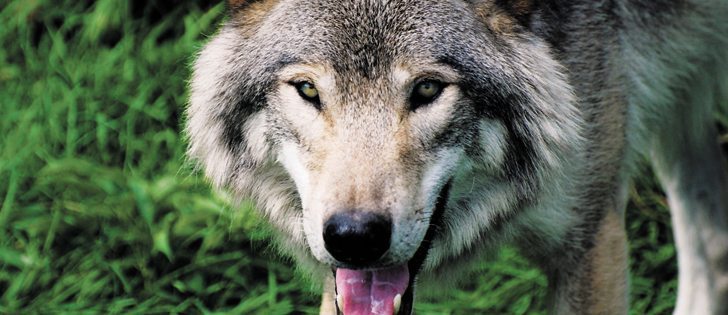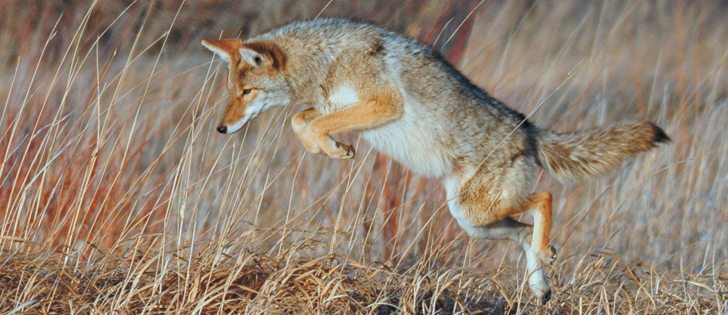For the last three years, Ray Bittner and a group of Manitoba livestock producers have been testing methods to reduce predation of cattle and sheep in the province.
They have tried things like flashing lights, temporary electric fencing, fladry wire (wire fence with long narrow fabric streamers) and predator-resistant pens.
Bittner is the leader of the Livestock Predation Prevention Pilot Project, a three-year study that began in 2020. Producers involved in the project believe the strategies are helping to reduce attacks on livestock from predators such as coyotes.
Read Also

Short rapeseed crop may put China in a bind
Industry thinks China’s rapeseed crop is way smaller than the official government estimate. The country’s canola imports will also be down, so there will be a lot of unmet demand.
At the Manitoba Beef Producers annual meeting held Feb. 2-3 in Winnipeg, Bittner summarized the results of the pilot project.
The results are encouraging, but cattle ranchers in Manitoba need action on wolves, said Tom Teichroeb, who farms near Langruth.
Teichroeb, who spoke following Bittner’s presentation, said the wolf population is out of control, and wolf attacks on livestock have become a massive problem for beef producers.
As Teichroeb was speaking, Bittner nodded in agreement.
In the last couple years, he’s received many phone calls and emails about wolves.
“We’ve heard a lot of strong, strong words, exactly like you’re saying,” he told Teichroeb. “There are a lot of wolves out there…. You’re right. With what (strategies) we’ve offered here, we don’t have much for producers who have wolf problems on extensive pastures.”
The strategies that are effective against other predators don’t seem to work on wolves, possibly because they have different behaviours, roam across a larger territory and are highly intelligent.
“The mitigation we’re trying here … we have a hard time working against wolves,” Bittner said. “They are a tough foe (and) a smart foe.”
MBP general manager Carson Callum has also heard many complaints about wolves. That’s why the organization has reached out to the province, asking for action on wolves and predation.
“We know the (wolf) numbers are a challenge. I think they (the government) … in recent meetings seem to have a little more desire to look at this issue,” Callum said.
Manitoba Agricultural Services Corp. insurance claims for livestock predation have increased, and the government is aware that more payments are being made for livestock losses, he added.
“I think the Manitoba government can see value in first surveying the wolves … and coming up with some population counts. That’s going to be an important step one.”
The International Wolf Center says there are 4,000 to 6,000 wolves in the province, but that number is from 2013.
An updated count of wolves might change that figure, but a new count would be a rough estimate, said Shelley Alexander, a University of Calgary professor who is an expert in wolves and coyotes.
Wolves are difficult to count and a census of wolves can be inaccurate.
“Wolves are territorial and you can get a sense of how many are in a (particular) pack” using ground tracking or aerial surveys.
“Sometimes people just estimate based on area, which is really risky.”
For instance, if five wolves are spotted in 10 sq. kilometres, that number is extrapolated to say there are 10 wolves in 20 sq. km.
“Those (methods) are known to be pretty flawed,” Alexander said, adding that wolf numbers are usually exaggerated.
“They (wolves) are often over-represented because their ranges can be very big…. People will see the same wolves in two different places and count them twice.”
The bigger issue, she said, is the belief that a higher population of wolves will lead to more attacks on livestock.
“Maybe there’s an assumption that all wolves, if they’re present on the landscape, are going to eat the livestock. That’s not necessarily true. (Research) shows that certain animals learn to do that (attack livestock),” Alexander said.
“It’s not a numbers game…. It’s about where those wolves are learning to do the wrong thing and what is driving that (behaviour).”
Instead of doing a population count, it’s better to do an investigation of wolf attacks in certain locations and try to understand the factors causing more predation, she added.
“The first place to start is (asking if) there’s a pattern in where these are happening.”
Part of that investigation should be looking at social structure of wolf groups. Are they living in packs of juvenile wolves, or is it a family group with older wolves and more structure?
“Disruption of families decreases population stability and can easily translate to increased predation on livestock,” Alexander said in an email.
Livestock predation claims in Manitoba show that wolf attacks happen at a different time of the year and at different locations than coyote attacks.
“I have data to back me up. A lot of the coyote losses are in spring and early summer — just post-calving, young calves,” Bittner said.
“Wolves, according to the MASC database, are July, August and September.”
Wolf attacks are more likely in the summer when cattle are out on pasture, often long distances from the farmyard.
“(It’s) low-value land, crown land … that is closer to the wolf territory,” Bittner said.
“You are further awa y… there is less checking (of cattle).”
There may be commonalities in where wolf predation happens, but Bittner is convinced wolf numbers are excessive in parts of the province.
Manitoba’s moose population has been declining, and since 2011 the provincial government has banned moose hunting in a number of regions.
Wolf attacks on young moose could be pushing down the moose population, which suggests there are too many wolves.
“I’m certain there are places in Manitoba where there is an overpopulation … where it’s not sustainable for everybody and the environment,” Bittner said.
















